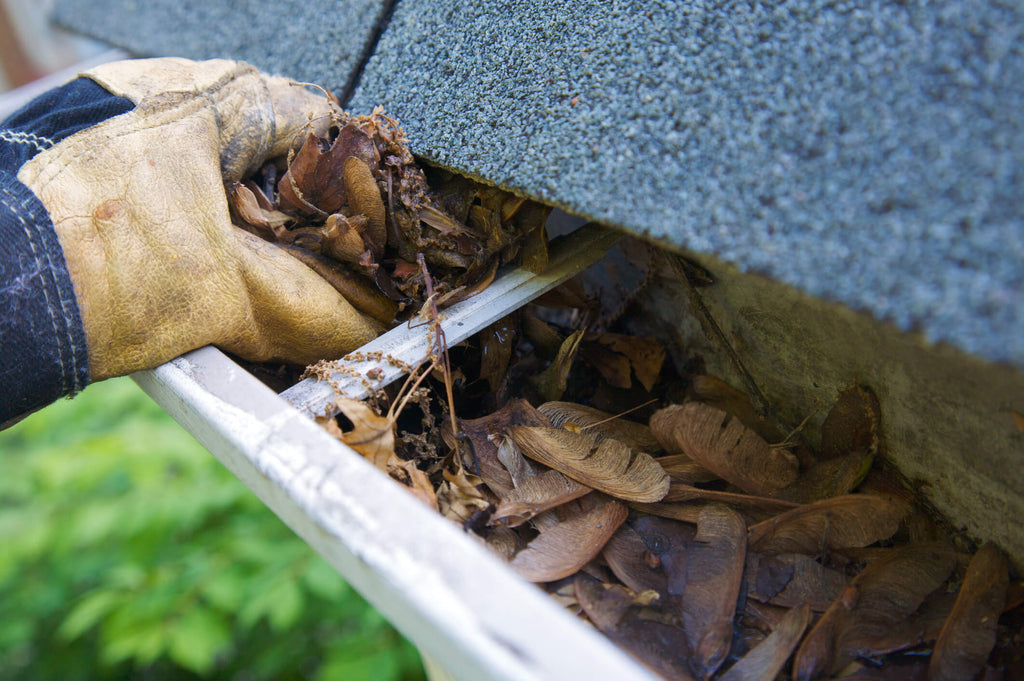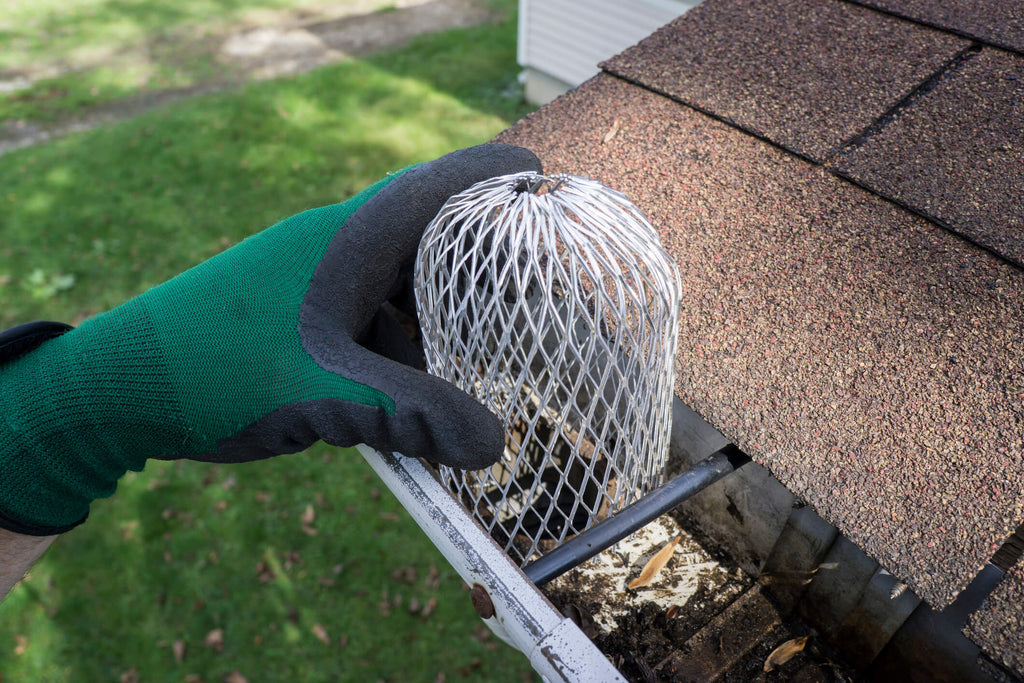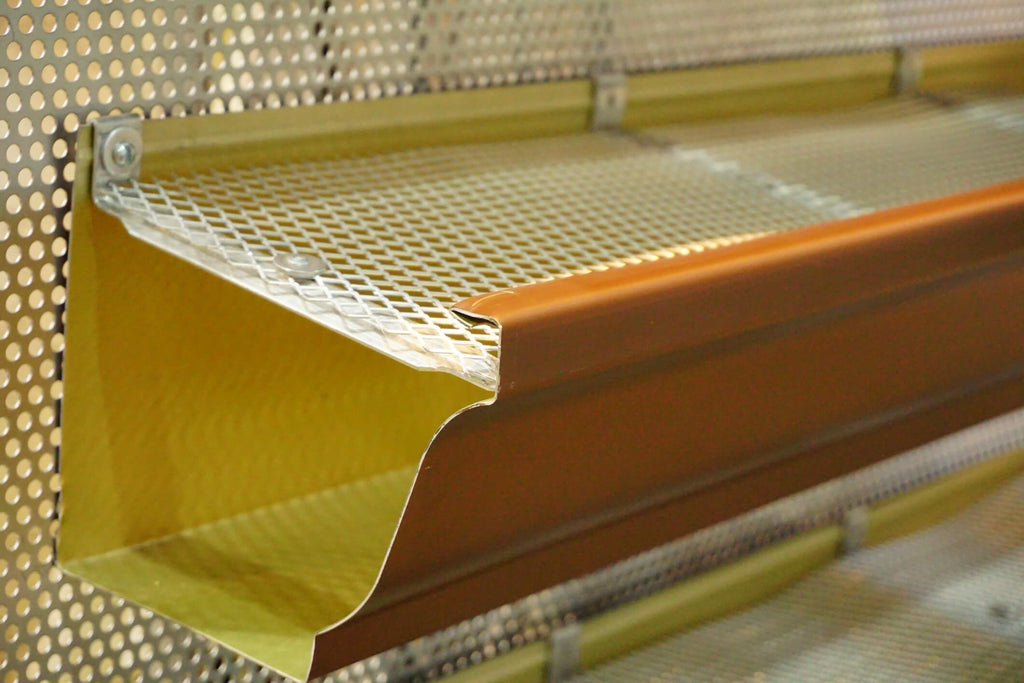When it comes to home maintenance, downspouts may be the last thing on your mind. However, they are essential to keeping your home safe from irreversible damage. While they are excellent at diverting water away from your home, downspouts need protection from excessive amounts of leaves, twigs, and other debris. Downspout filters are critical in keeping downspouts efficient, and, ultimately, protecting your home from water damage. Below you can find information on what a downspout filter is, the types of downspout filters available, and the advantages and disadvantages of each type.
What is a downspout filter?
A downspout filter is a device that traps debris to prevent clogs in a storage tank or drainage system. A filter can be installed at the gutters, in the downspout pipe, or at the downspout outlet. Without a downspout filter, drainage systems can overflow, causing water to pool around a home’s foundation and causing costly damage. All downspout filters require some form of maintenance, but some require more than others. For example, strainers, diverters, and some types of leaf traps require more maintenance on the gutters or downspouts themselves than gutter guards.
Learn more: Above Ground vs Underground Water Storage Tanks
Are downspout filters necessary?
Yes, downspout filters are necessary to protect your home from water damage. Without downspout filters, water overflows the gutters and pools around a home’s foundation and causes expensive damage. Even if you do not have trees around your home, a simple strainer will take care of small debris, such as insects. Maintaining proper flow in your gutters is a worthwhile investment that will save you hassle in the future.

What are the types of downspout filters?
There are four main types of products that filter water before it enters your downspouts or while it flows through them:
- Strainers
- Leaf traps
- Downspout diverters
- Gutter guards
Strainers, Leaf traps, and diverters install directly into or adjacent to the downspout, while gutter guards filter debris in the gutters before it reaches the downspout.
Strainers
Strainers are a type of filter installed in the connection between the gutter and the downspout. They are typically made from plastic, copper, or aluminum arranged in a web-like structure that strains debris from water as it passes through the gutter and into the downspout. Strainers normally take on a cylindrical shape, allowing debris to pass around them.
Advantages of strainers
- Incredibly easy to install
- Inexpensive to operate
Disadvantages of strainers
- Do not eliminate the need to clean gutters
- Can become overwhelmed if gutters are not properly cleaned

Leaf traps
Leaf traps are a type of downspout filter that install directly into the pipe. They can be placed anywhere from the middle of the downspout down to its outlet. Leaf traps are similar to strainers in their mesh-like structure, but traps retain the debris rather than letting it flow past. Traps can be either open or closed, and the ability of a trap to retain debris depends on its size and type. While open traps hold less debris than closed traps, open traps are easier to maintain because they are easily viewable. A closed trap, on the other hand, hides the debris from sight, making it more difficult to tell when maintenance is needed.
Some leaf traps, such as the Leaf Eater Ultra, contain an angled screen that causes debris to slide out of the trap. This increases the efficiency of the filter and decreases the amount of maintenance required.
Advantages of leaf traps
- Catch debris rather than allowing it to clog gutters
- Not overwhelmed as easily as strainers
Disadvantages of leaf traps
- More difficult to install than strainers
- Many types require frequent maintenance in homes with many trees
Downspout diverters
Unlike filters, diverters direct the flow of water away from the natural flow of the downspout. Diverters are most often used in conjunction with a rainwater storage tank. Once the tank is full, water overflows back to the diverter through an overflow pipe and into the downspout. Some diverters contain their own filters, and others do not require an overflow pipe.
Learn more: 5 Advantages and Disadvantages of Rainwater Harvesting
Advantages of downspout diverters
- Are excellent for those who wish to save rainwater for later use
- If used for rainwater storage, saves money and helps the environment
Disadvantages of downspout diverters
- Can become overwhelmed if rainfall is too heavy
- Must have appropriate overflow system in place
- Not effective in cold weather if rain barrel is not appropriately insulated
Gutter guards
Gutter guards serve the same purpose as strainers, leaf traps, and diverters, but they prevent debris from entering gutters and downspouts altogether. Gutter guards cover gutters with a mesh filter, making maintenance a less frequent task than other forms of filtration where debris must be cleaned out frequently.
Advantages of gutter guards
- Require little to no maintenance depending on the amount and type of debris they must filter
- Prevent gutters from corrosion damage caused by the introduction of debris
- Improves lifespan of gutters
Disadvantages of gutter guards
- Can contribute to roof damage if leaves and other debris become too heavy
- Much more expensive than other filtration types

How much do downspout filters cost?
The prices of filters depend on the filters’ size, flow rate, and layers of protection. The cheapest of all types of filters are strainers, which can cost as little as $3. Simple filters that install directly into your downspout cost anywhere from $40-$70. Large filters, such as the Maelstrom Rainwater Filter, incorporate into a storage tank and range from $150-$350. Gutter guards, the most expensive type of filtration, can cost anywhere from $200 to $2000 depending on the size of your home and the quality of the guards. While cheaper options may be tempting, homes with multiple trees will want to invest in a beefier filtration system than homes with little debris. Purchasing a slightly more expensive system can save your home from costly repairs caused by water damage.
How much does gutter cleaning cost?
Gutter cleaning averages about $.80 per foot for two-story houses and can be as low as $.40 for single-story homes. This makes the cost around $80 for every 100 feet in a two-story home and $40 per 100 feet for a single-story house. If debris enters your water storage tank, it will likely need to be cleaned before you can collect rainwater again. Water storage tank cleaning averages at around $250 for an average above-ground tank. Underground tanks can cost much more depending on the size and location of the tank. Keeping gutters and downspouts clean with filters is an excellent way to prevent more frequent cleaning of your gutter system.
What is the best downspout filter?
The best downspout filter is the one that works best for your home. Since all homes are surrounded by different numbers and types of trees, the system that works best for you may fail to protect another home and vice versa. If your gutters become filled with leaves easily, gutter guards or a quality leaf trap may be best for you. If you wish to store rainwater and use it for outdoor applications, a downspout diverter is an excellent option. If your home is not surrounded by trees at all, a simple strainer may be suitable to filter out insects and other debris that can enter your gutters. Here are some quality downspout filters that may work for your home.
Leaf Eater Slimline
The Leaf Eater Slimline is a closed leaf trap that blends in well with your downspout. It traps debris with a mesh filter, improving the quality of water before it enters your storage tank or drainage system. Its slim design and excellent leaf-catching filter make it an effective, aesthetically pleasing choice for your home.

Maelstrom Rainwater Filter
The Maelstrom Rainwater Filter is designed to attach directly to your rainwater storage tank. Rated for flow rates of up to 9510 gallons per hour, it will not become overwhelmed in even the harshest downpours. Its self-flushing system means maintenance is rarely needed and is easy when necessary. This filter can be installed on top of your tank, inside it, mounted on its wall, or in the stormwater pit. No matter which location you choose, the Maelstrom Rainwater Filter is extremely easy to install and will greatly improve the quality of your rainwater.

Leaf Eater Advanced
The Leaf Eater Advanced is a leaf trap compatible with both 3-inch and 4-inch downspouts. This filter is great for rainwater harvesting applications or for simply removing debris from your downspout. The Leaf Eater Advanced is compact, making installation more simple than other leaf traps. It allows for high flow rates, and its debris shedding technology makes maintenance a less common task than other filters. Its ease of installation, high performance, and lack of maintenance make the Leaf Eater Advanced an excellent addition to your downspout filtration system.

If you have any questions about downspout filters, please do not hesitate to contact us.
